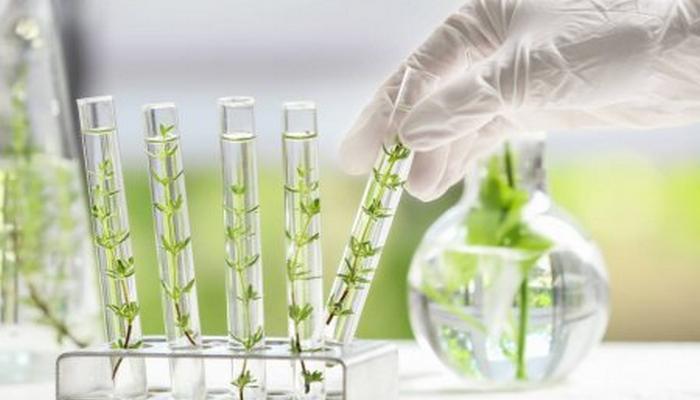The fascinating world of plant genetics: from theory to practice
Since the beginning of civilization, plants have been manipulated to serve our purposes, whether for food, ornamentation or the production of materials. In recent years, however, plant genetics has allowed a quantum leap in this manipulation, opening up a new world of possibilities.
By unlocking the secrets hidden in plant DNA, we are redefining the boundaries of what is possible in terms of crop production and disease resistance. This amazing science offers the promise of more productive crops, more resilient plants and a deeper understanding of how plant life develops and thrives.
We invite you to join us on this exciting journey into the world of plant genetics. Whether you’re an aspiring scientist, an agricultural producer, or just curious about the incredible potential hidden in nature, we promise this journey will be full of fascinating discoveries and game-changing innovations. Let’s explore the hidden world inside the seed together.
What is plant genetics?
Plant genetics is a specialized area of biology that deals with the inheritance of biological traits in plants. This scientific discipline investigates how genes control aspects of plant growth, development and adaptation to the environment. It involves studying the genes themselves, how they work and interact, and how their functions translate into visible traits.
Plant genetics covers a wide range of topics, including the structure of DNA, how genetic information is copied and passed from one generation to the next, and how genetic mutations can change plant traits. It also covers how plants use genetic information to respond to environmental changes and adapt to adverse conditions.
The study of plant genetics has profound implications for agriculture, medicine and ecology. It can help improve the productivity of agricultural crops, plant resistance to diseases and pests, and can even lead to breakthroughs in medicine, such as the production of biopharmaceutical plants. In addition, plant genetics can be used to help conserve plant biodiversity and understand the evolution of plant species.
How is genetic manipulation done in plants?
Genetic manipulation in plants, also known as genetic engineering, is a process that involves directly modifying the genome of a plant. This is done by inserting, removing or changing one or more specific genes.
Initially, it is necessary to identify the gene of interest that confers a certain characteristic to the plant. This gene may be responsible for making the plant resistant to a disease, or allowing it to grow in adverse conditions, for example. Once identified, this gene is isolated.
After the isolation step, the gene is introduced into the genome of the target plant, usually through a vector. This vector can be a virus that has been genetically modified to carry the gene, or a bacterium known as Agrobacterium tumefaciens, which naturally transfers part of its DNA into the plant.
Once the gene of interest is inserted into the plant’s genome, it is cultivated under controlled conditions. Over time, the plant begins to express the new trait conferred by the gene. This process can lead to the creation of genetically modified (GM) plants that are resistant to pests, tolerant of adverse weather conditions, or that have better nutritional quality.
It is emphasized, however, that genetic engineering in plants must be carried out responsibly and strictly regulated, due to the associated ethical and environmental implications. It is vital to ensure that these modified plants do not harm the environment or human and animal health.
What is the genetic material of plants?
The genetic material of plants, as in all living organisms, is deoxyribonucleic acid, or DNA. This DNA contains the genetic information that gives each plant its unique characteristics. Located in the nucleus of cells, DNA is organized into structures called chromosomes.

Each chromosome contains many genes, which are segments of DNA that encode instructions for building proteins. Proteins, in turn, carry out most of the vital functions of cells and determine most of a plant’s observable characteristics, such as its color, height, resistance to disease, and many others.
Interestingly, plants, unlike animals, also contain DNA in two other parts of the cell: the chloroplasts and the mitochondria. Chloroplasts are responsible for photosynthesis and contain their own DNA, which is inherited matrilineally (from the mother). Mitochondria, which produce energy for the cell, also have their own DNA.
Thus, the genetic material of plants is complex and found in various parts of the cell. A complete understanding of this DNA is fundamental to plant genetics and has the potential to transform our ability to manipulate plants for our own purposes.
What are the methods of genetic improvement of plants?
The genetic improvement of plants is an old practice, but the understanding of DNA and the principles of genetics has allowed the development of increasingly precise and effective techniques. The objective of breeding is to produce plant varieties with desirable characteristics, such as greater productivity, resistance to diseases and pests, adaptability to different environmental conditions and better nutritional quality. Below are some of the most commonly used methods:
- artificial selection
- Hybridization
- induced mutation
- genetic engineering
- gene editing
- molecular markers
Each of these methods has its advantages and disadvantages, and choosing the appropriate method will depend on the type of plant and the desired characteristics.
How to explain genetics?
Genetics is a branch of biology that studies biological inheritance, that is, how characteristics are passed from parents to children through genes. Genes are units of genetic information that are present in DNA, the genetic material that exists in all cells of an organism.
Each gene contains the code for making a specific protein. Proteins, in turn, perform a wide variety of functions in the organism and determine the physical and biochemical characteristics of an organism, such as eye color, height, blood type, resistance to diseases, among others.
